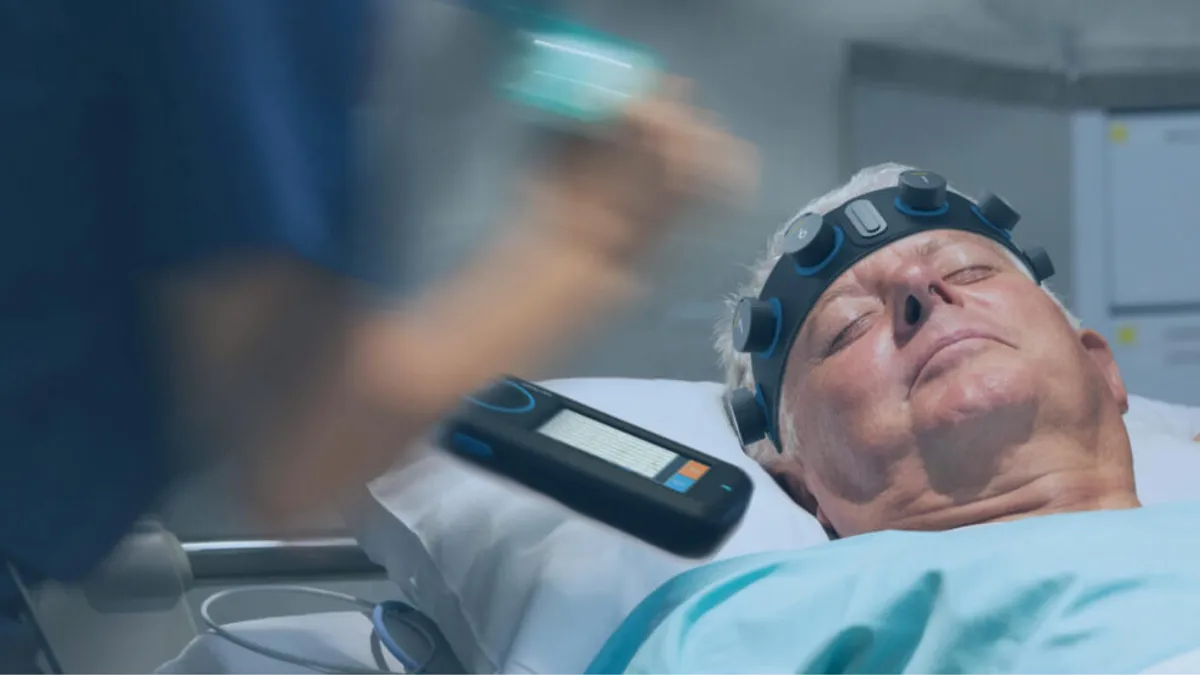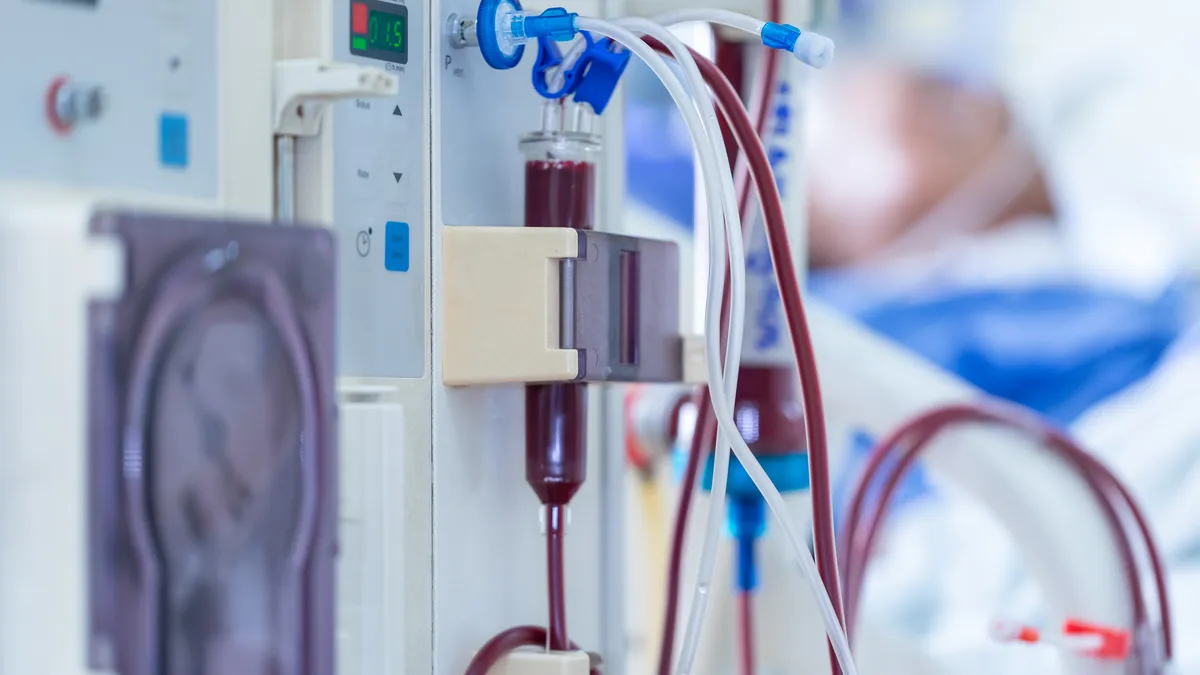If advocates seeking greater transparency into medical device maker payments to doctors hoped reporting mandates would tamp down on the stream of cash — they may be disappointed.
In the half decade or so since Congress required disclosure of items like industry-funded consulting and speaking fees, contributions to doctors from 20 top-spending medtechs collectively more than tripled, according to a MedTech Dive analysis of CMS Open Payments data. The extent and relative growth of those payment amounts varied by manufacturer.
Top-spending medtech companies' total payments to doctors, 2013 through 2018 (rounded to nearest millions of dollars)
| Company | General | Research | Combined |
|---|---|---|---|
| Medtronic | 698 | 370 | 1,067 |
| Zimmer Biomet | 529 | 39 | 569 |
| Stryker | 377 | 41 | 419 |
| Boston Scientific | 256 | 124 | 379 |
| Edwards Lifesciences | 101 | 177 | 279 |
| Abbott | 117 | 125 | 242 |
| Smith & Nephew | 215 | 26 | 242 |
| Intuitive Surgical | 186 | 2 | 188 |
| NuVasive | 141 | 3 | 144 |
| BD | 36 | 72 | 108 |
SOURCE: OpenPaymentsData.CMS.gov
For example, joint replacement giant Stryker boosted its general payments to doctors (those classified as unrelated to research) from $69 million in 2017 to $92 million in 2018. And its orthopaedics competitor Zimmer Biomet upped its annual spending by more than 500% since disclosure began in 2013, jumping from nearly $20 million to $109 million last year.
Senate Finance Committee Chairman Chuck Grassley, R-Iowa, was the lead sponsor of the Physician Payments Sunshine Act, which mandated manufacturers of a Medicare- or Medicaid-covered drug, device, biological or medical supplies to annually disclose general and research payments to doctors, medical practices, or group practices.
In 2010 the legislation, passed as part of the Affordable Care Act, established requirements that companies openly disclose such payments. Device companies began sharing data on payments to doctors starting in 2013.
Since then, Grassley has worked to bolster the law and his staff said he is pleased with how the law is working.
"He does think it is effective," a spokesperson said in an email, adding that Grassley added nurse practitioners and physician assistants to the Sunshine Act in opioid legislation last year.
While many manufacturers tell MedTech Dive increased spending can be attributed to mergers and acquisitions, advocates say the payments can sometimes represent a conflict of interest for doctors tasked with patient care.
A 2018 JAMA Surgery study found of 100 doctors receiving the largest payments from medical device manufacturers, only 37.3% of conflicts of interests were listed in relevant publications.
"This high rate of discordance raises concern regarding the accuracy and credibility of self-declared COI," the JAMA researchers wrote, adding that authors ought to disclose all financial ties, and an unbiased third party can decide on relevance of disclosures.
"I think it reflects in part that medical device companies believe that these types of payments increase their market share. If they are successful in influencing physicians, they are doing more of it because it is successful for the company," Public Citizen's Michael Carome said.
A Stryker spokesperson told MedTech Dive via email that such payments are used to support medical training and education for doctors and are needed to help support safe and effective use of medical devices. The company said its spending adheres to all ethical and legal requirements. The spokesperson attributed the increase to greater sales growth.
CEO Kevin Lobo specifically called out the company's $1.4 billion acquisition of K2M as a reason for 2018's boosted spend.
"We were an $8 billion dollar company when I became CEO; we're $15 billion this year," Lobo said in comments to MedTech Dive earlier in 2019. "When you buy businesses like K2M, businesses that have high physician engagement and you pull all their data in, you don't have a comparison for the previous year, I'm sure that's the biggest driver."
Zimmer Biomet is among the top-spending manufacturers contributing the most to doctors compared to overall market cap. The company spent close to $570 million on total general and research payments during the 2013 to 2018 period, ranking second only to Medtronic's total of approximately $1.07 billion spent over the period. While Medtronic's total spend approaches twice that of Zimmer Biomet's, Medtronic's market cap is more than five times the size of Zimmer Biomet's.
Zimmer completed its acquisition of Biomet in 2015. The company's general payments more than doubled between 2014 and 2015 to $104 million, peaking at $135 million in 2016. Zimmer Biomet did not respond to MedTech Dive's requests for comment.
Other orthopaedic device manufacturers dotting the top of the list since reporting requirements began are Smith & Nephew and NuVasive, which had a lower overall spend compared to many medtechs, but spent the most relative to its market cap of the companies in MedTech Dive's analysis.
Medtronic, whose market cap is a little more than double that of BD's, spent almost as much on general payments in 2018 alone (about $107 million) as BD did on general and research payments combined between 2013 and 2018. BD appears to have routinely funneled more toward research payments than general payments, a trend uncommon among its pure medtech peers.

BD spokesperson Matthew Coppola said that general payments in 2015 — more than 2.8 times the amount spent in 2014 — can be largely attributed to its $12.2 billion acquisition of CareFusion.
"BD is committed to transparency and supports the goals of the Physician Payments Sunshine Act to ensure that health care professionals make independent decisions regarding the health and treatment of patients," he told MedTech Dive over email.
Boston Scientific also tied its growth from $24 million in combined general and research payments in 2013 to more than $100 million in 2018 to M&A.
"In recent years, our work with physicians increased relative to the size and complexity of our business, driven in large part by agreements carried over from acquisitions," Boston Scientific spokesperson Katie Schur said in a statement emailed to MedTech Dive.
In CMS' recent 2020 Physician Fee Schedule, the agency expanded the categories of general payment disclosures, adding debt forgiveness, long-term medical supply or device loans and acquisitions.
The agency said the new categories will help capture "transfers of value related to forgiving the debt of a covered recipient, a physician owner, or the immediate family of the physician," loans of covered devices or provisions of medical supplies for more than 90 days, and buyout payments to covered recipients when a company they have ownership in is bought.
CMS also consolidated payments related to accredited or unaccredited continuing education programs into a single "medical education programs" category. "Although we defined separate categories at the inception of the Open Payments program, we no longer believe that the distinction in this category is necessary," CMS said in its final rule and interim final rule.
But the payments are not likely to diminish and limits are unlikely, even critics acknowledge.
"I don't think the payments can ever be legally prohibited, I think these payments are going to be part of the landscape of our healthcare system," Carome said.
"Transparency is certainly important, and ideally the transparency would extend to the level of the patient so they understand that a doctor may be receiving payments from a particular company and influence decisions they may be making."



















